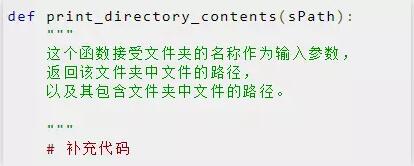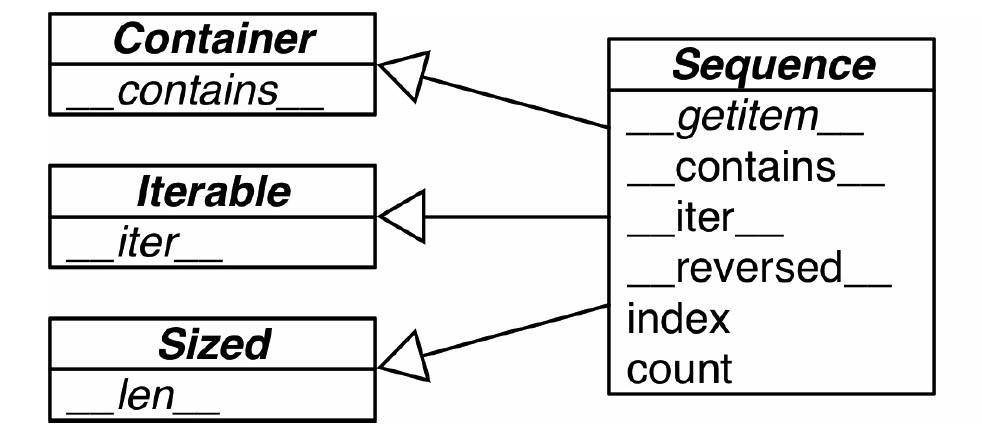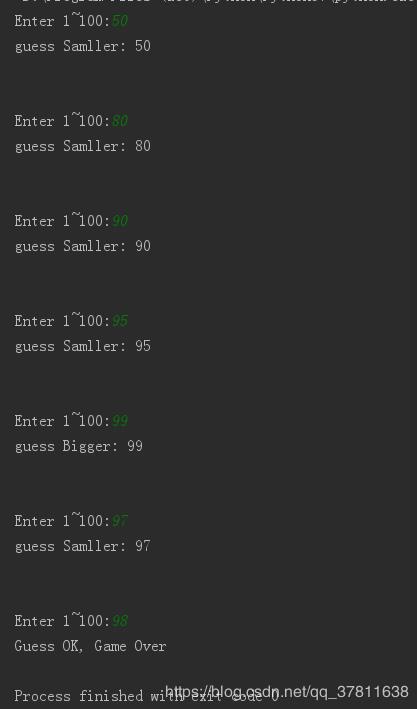详解python的ORM中Pony用法
Pony是Python的一种ORM,它允许使用生成器表达式来构造查询,通过将生成器表达式的抽象语法树解析成SQL语句。它也有在线ER图编辑器可以帮助你创建Model。
示例分析
Pony语句:
select(p for p in Person if p.age > 20)
翻译成sql语句就是:
SELECT p.id, p.name, p.age, p.classtype, p.mentor, p.gpa, p.degree
FROM person p
WHERE p.classtype IN ('Student', 'Professor', 'Person')
AND p.age > 20
Pony语句:
select(c for c in Customer
if sum(c.orders.price) > 1000)
翻译成sql语句就是:
SELECT "c"."id"
FROM "Customer" "c"
LEFT JOIN "Order" "order-1"
ON "c"."id" = "order-1"."customer"
GROUP BY "c"."id"
HAVING coalesce(SUM("order-1"."total_price"), 0) > 1000
安装Pony
pip install pony
使用Pony
#!/usr/bin/env python
#-*- coding:utf-8 -*-
import datetime
import pony.orm as pny
import sqlite3
# conn = sqlite3.connect('D:\日常python学习PY2\Pony学习\music.sqlite')
# print conn
# database = pny.Database()
# database.bind("sqlite","music.sqlite",create_db=True)
# 路径建议写绝对路径。我这边开始写相对路径报错 unable to open database file
database = pny.Database("sqlite","D:\日常python学习PY2\Pony学习\music.sqlite",create_db=True)
########################################################################
class Artist(database.Entity):
"""
Pony ORM model of the Artist table
"""
name = pny.Required(unicode)
#被外键关联
albums = pny.Set("Album")
########################################################################
class Album(database.Entity):
"""
Pony ORM model of album table
"""
#外键字段artlist,外键关联表Artist,Artist表必须写Set表示被外键关联
#这个外键字段默认就是index=True,除非自己指定index=False才不会创建索引,索引名默认为[idx_表名__字段](artist)
artist = pny.Required(Artist)
title = pny.Required(unicode)
release_date = pny.Required(datetime.date)
publisher = pny.Required(unicode)
media_type = pny.Required(unicode)
# turn on debug mode
pny.sql_debug(True) # 显示debug信息(sql语句)
# map the models to the database
# and create the tables, if they don't exist
database.generate_mapping(create_tables=True) # 如果数据库表没有创建表
运行之后生成sqlite如下:
上述代码对应的sqlite语句是:
GET CONNECTION FROM THE LOCAL POOL
PRAGMA foreign_keys = false
BEGIN IMMEDIATE TRANSACTION
CREATE TABLE "Artist" (
"id" INTEGER PRIMARY KEY AUTOINCREMENT,
"name" TEXT NOT NULL
)
CREATE TABLE "Album" (
"id" INTEGER PRIMARY KEY AUTOINCREMENT,
"artist" INTEGER NOT NULL REFERENCES "Artist" ("id"),
"title" TEXT NOT NULL,
"release_date" DATE NOT NULL,
"publisher" TEXT NOT NULL,
"media_type" TEXT NOT NULL
)
CREATE INDEX "idx_album__artist" ON "Album" ("artist")
SELECT "Album"."id", "Album"."artist", "Album"."title", "Album"."release_date", "Album"."publisher", "Album"."media_type"
FROM "Album" "Album"
WHERE 0 = 1
SELECT "Artist"."id", "Artist"."name"
FROM "Artist" "Artist"
WHERE 0 = 1
COMMIT
PRAGMA foreign_keys = true
CLOSE CONNECTION
插入/增加数据
源码地址:https://github.com/flowpig/daily_demos
#!/usr/bin/env python
#-*- coding:utf-8 -*-
import datetime
import pony.orm as pny
from models import Album, Artist
from database import PonyDatabase
# ----------------------------------------------------------------------
@pny.db_session
def add_data():
""""""
new_artist = Artist(name=u"Newsboys")
bands = [u"MXPX", u"Kutless", u"Thousand Foot Krutch"]
for band in bands:
artist = Artist(name=band)
album = Album(artist=new_artist,
title=u"Read All About It",
release_date=datetime.date(1988, 12, 01),
publisher=u"Refuge",
media_type=u"CD")
albums = [{"artist": new_artist,
"title": "Hell is for Wimps",
"release_date": datetime.date(1990, 07, 31),
"publisher": "Sparrow",
"media_type": "CD"
},
{"artist": new_artist,
"title": "Love Liberty Disco",
"release_date": datetime.date(1999, 11, 16),
"publisher": "Sparrow",
"media_type": "CD"
},
{"artist": new_artist,
"title": "Thrive",
"release_date": datetime.date(2002, 03, 26),
"publisher": "Sparrow",
"media_type": "CD"}
]
for album in albums:
a = Album(**album)
if __name__ == "__main__":
db = PonyDatabase()
db.bind("sqlite", "D:\日常python学习PY2\Pony学习\music.sqlite", create_db=True)
db.generate_mapping(create_tables=True)
add_data()
# use db_session as a context manager
with pny.db_session:
a = Artist(name="Skillet")
'''
您会注意到我们需要使用一个装饰器db_session来处理数据库。
它负责打开连接,提交数据并关闭连接。 你也可以把它作为一个上
下文管理器,with pny.db_session
'''
更新数据
#!/usr/bin/env python
#-*- coding:utf-8 -*-
import pony.orm as pny
from models import Artist, Album
from database import PonyDatabase
db = PonyDatabase()
db.bind("sqlite", "D:\日常python学习PY2\Pony学习\music.sqlite", create_db=True)
db.generate_mapping(create_tables=True)
with pny.db_session:
band = Artist.get(name="Newsboys")
print band.name
for record in band.albums:
print record.title
# update a record
band_name = Artist.get(name="Kutless")
band_name.name = "Beach Boys"
#使用生成器形式查询
'''
result = pny.select(i.name for i in Artist)
result.show()
结果:
i.name
--------------------
Newsboys
MXPX
Beach Boys
Thousand Foot Krutch
Skillet
'''
删除记录
import pony.orm as pny from models import Artist with pny.db_session: band = Artist.get(name="MXPX") band.delete()
Pony补充
可以连接的数据库:
##postgres
db.bind('postgres', user='', password='', host='', database='')
##sqlite create_db:如果数据库不存在创建数据库文件
db.bind('sqlite', 'filename', create_db=True)
##mysql
db.bind('mysql', host='', user='', passwd='', db='')
##Oracle
db.bind('oracle', 'user/password@dsn')
Entity(实体)类似mvc里面的model
在创建实体实例之前,需要将实体映射到数据库表,生成映射后,可以通过实体查询数据库并创建新的实例。db.Entity自己定义新的实体必须从db.Entity继承
属性
class Customer(db.Entity): name = Required(str) picture = Optional(buffer) sql_debug(True) # 显示debug信息(sql语句) db.generate_mapping(create_tables=True) # 如果数据库表没有创建表
属性类型
- Required
- Optional
- PrimaryKey
- Set
Required and Optional
通常实体属性分为Required(必选)和Optional(可选)
PrimaryKey(主键)
默认每个实体都有一个主键,默认添加了id=PrimaryKey(int,auto=True)属性
class Product(db.Entity): name = Required(str, unique=True) price = Required(Decimal) description = Optional(str) #等价于下面 class Product(db.Entity): id = PrimaryKey(int, auto=True) name = Required(str, unique=True) price = Required(Decimal) description = Optional(str)
Set
定义了一对一,一对多,多对多等数据结构
# 一对一
class User(db.Entity):
name = Required(str)
cart = Optional("Cart") #必须Optional-Required or Optional-Optional
class Cart(db.Entity):
user = Required("User")
# 多对多
class Student(db.Entity):
name = pny.Required(str)
courses = pny.Set("Course")
class Course(db.Entity):
name = pny.Required(str)
semester = pny.Required(int)
students = pny.Set(Student)
pny.PrimaryKey(name, semester) #联合主键
pny.sql_debug(True) # 显示debug信息(sql语句)
db.generate_mapping(create_tables=True) # 如果数据库表没有创建表
#-------------------------------------------------------
#一对多
class Artist(database.Entity):
"""
Pony ORM model of the Artist table
"""
name = pny.Required(unicode)
#被外键关联
albums = pny.Set("Album")
class Album(database.Entity):
"""
Pony ORM model of album table
"""
#外键字段artlist,外键关联表Artist,Artist表必须写Set表示被外键关联
#这个外键字段默认就是index=True,除非自己指定index=False才不会创建索引,索引名默认为[idx_表名__字段](artist)
artist = pny.Required(Artist) #外键字段(数据库显示artist)
title = pny.Required(unicode)
release_date = pny.Required(datetime.date)
publisher = pny.Required(unicode)
media_type = pny.Required(unicode)
# Compositeindexes(复合索引)
class Example1(db.Entity):
a = Required(str)
b = Optional(int)
composite_index(a, b)
#也可以使用字符串composite_index(a, 'b')
属性数据类型
格式为 :
属性名 = 属性类型(数据类型)
- str
- unicode
- int
- float
- Decimal
- datetime
- date
- time
- timedelta
- bool
- buffer ---used for binary data in Python 2 and 3
- bytes ---used for binary data in Python 3
- LongStr ---used for large strings
- LongUnicode ---used for large strings
- UUID
attr1 = Required(str) # 等价 attr2 = Required(unicode) attr3 = Required(LongStr) # 等价 attr4 = Required(LongUnicode) attr1 = Required(buffer) # Python 2 and 3 attr2 = Required(bytes) # Python 3 only #字符串长度,不写默认为255 name = Required(str,40) #VARCHAR(40) #整数的大小,默认2bit attr1 = Required(int, size=8) # 8 bit - TINYINT in MySQL attr2 = Required(int, size=16) # 16 bit - SMALLINT in MySQL attr3 = Required(int, size=24) # 24 bit - MEDIUMINT in MySQL attr4 = Required(int, size=32) # 32 bit - INTEGER in MySQL attr5 = Required(int, size=64) # 64 bit - BIGINT in MySQL #无符号整型 attr1 = Required(int, size=8, unsigned=True) # TINYINT UNSIGNED in MySQL # 小数和精度 price = Required(Decimal, 10, 2) #DECIMAL(10,2) # 时间 dt = Required(datetime,6) # 其它参数 unique 是否唯一 auto 是否自增 default 默认值 sql_default created_at = Required(datetime, sql_default='CURRENT_TIMESTAMP') index 创建索引 index='index_name' 指定索引名称 lazy 延迟加载的属性加载对象 cascade_delete 关联删除对象 column 映射到数据库的列名 columns Set(多对多列名) table 多对多中间表的表名字 nullable 允许该列为空 py_check 可以指定一个函数,检查数据是否合法和修改数据 class Student(db.Entity): name = Required(str) gpa = Required(float, py_check=lambda val: val >= 0 and val <= 5)
实例操作
# 获取实例 p = Person.get(name="Person") #返回单个实例,如同 Django ORM的get #------------------------------ # 查询 persons = Person.select() ''' select并没有连接数据库查询,只是返回一个Query object,调用persons[:]返回所有Person实例 ''' # limit persons [1:5] # show persons.show() # 生成器表达式查询,然后解析AST树的方式构造SQL语句 select(p for p in Person) #和Person.select()一样返回Query object select((p.id, p.name) for p in Person)[:] # 带where条件查询 select((p.id, p.name) for p in Person if p.age ==20)[:] # 分组聚合查询 select((max(p.age)) for p in Person)[:] #[25] max(p.age for p in Person) #25 select(p.age for p in Person).max() #25 #----------------------------- # 修改实例 @db_session def update_persons(): p = Person.get(id=2) p.page = 1000 commit() # 删除 @db_session def delete_persons(): p = Person.get(id=2) p.delete() commit()
pony使用还可以使用游标操作(这样就可以写原生sql语句了)
result = db.execute('''select name from Artist''')
print result.fetchall()
类似Django ORM的save函数
before_insert() Is called only for newly created objects before it is inserted into the database. before_update() Is called for entity instances before updating the instance in the database. before_delete() Is called before deletion the entity instance in the database. after_insert() Is called after the row is inserted into the database. after_update() Is called after the instance updated in the database. after_delete() Is called after the entity instance is deleted in the database.
例如:
class Message(db.Entity):
title = Required(str)
content = Required(str)
def before_insert(self):
print("Before insert! title=%s" % self.title)


